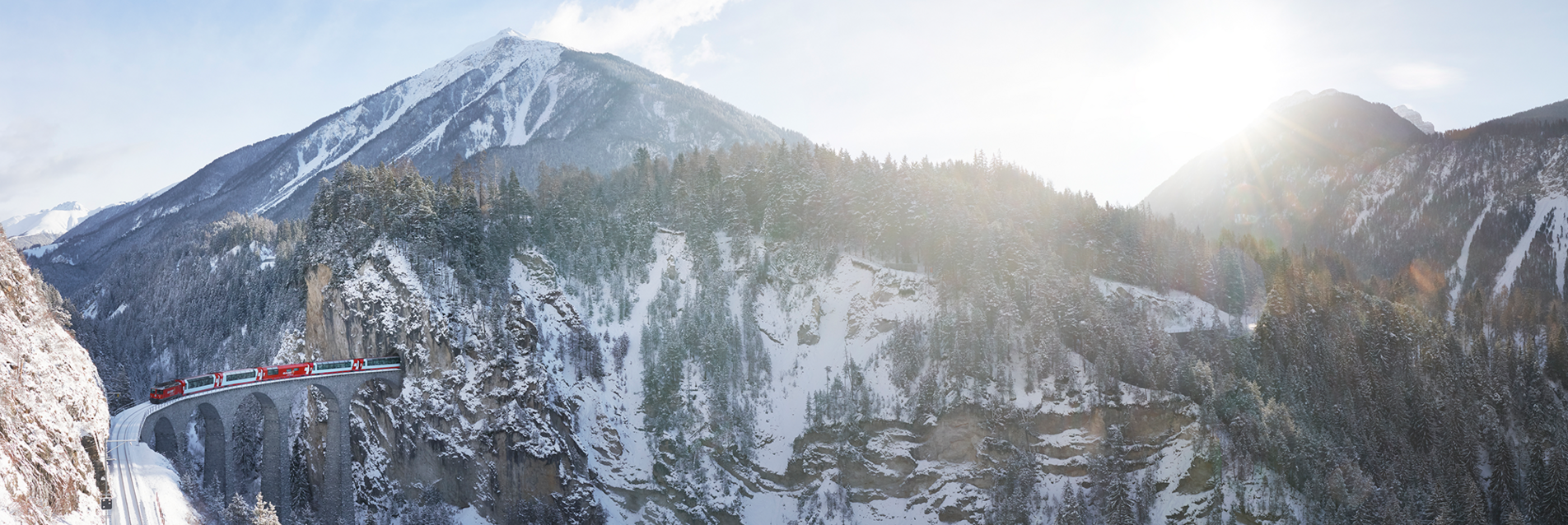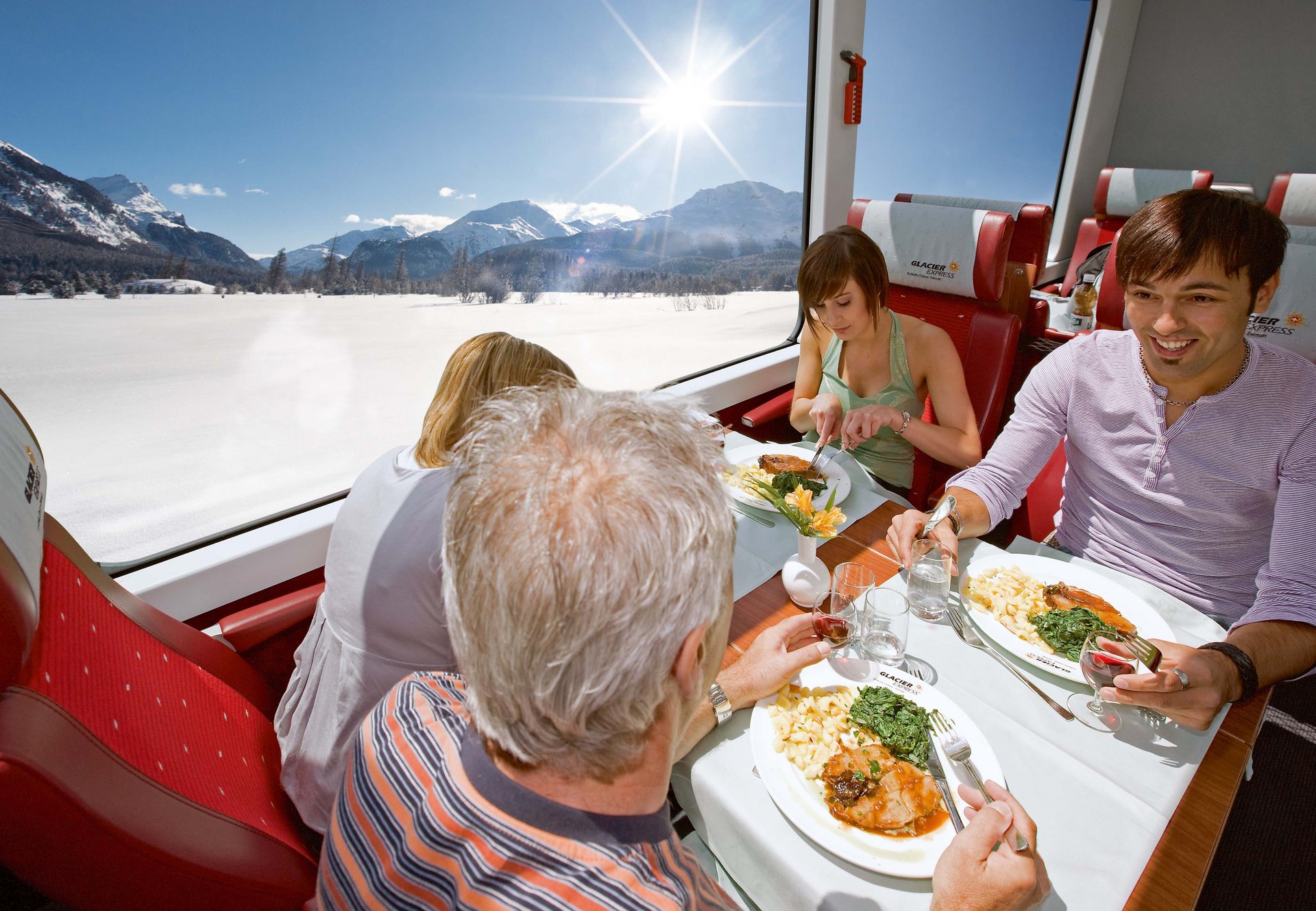History of Glacier Express
The Golden Twenties
As well-to-do society discovered the charms of the Swiss Alps, once isolated mountain villages such as Zermatt and St. Moritz were transformed into cosmopolitan resort towns.
The operators of the three railway companies Visp-Zermatt-Bahn (VZ), Rhaetian Railway (RhB) and Furka Oberalp Bahn (FOB) capitalised successfully on the tourism potential of the continuous Valais – Graubünden line opened in 1926. The through coaches used in the summer on the Brig – Chur and Brig – St. Moritz lines were much in demand by the travelling public.
First journey in 1930
After the Visp – Brig connecting line was opened, the Glacier Express travelled from Zermatt to St. Moritz for the first time on 25 June 1930. The trains were composed of elegant parlour and passenger cars with 1st, 2nd and 3rd classes, along with dining cars on the St. Moritz – Disentis route. The Visp-Zermatt-Bahn (VZ) and Rhaetian Railway (RhB) were equipped with the most modern electric locomotives of the time – known as “crocodiles”. The as yet non-electrified FOB used HG 3/4 steam engines.
In the 1990s, members of the Furka-Bergstrecke association succeeded in bringing the steam engines sent to Vietnam in 1947 back to Switzerland, where they created a veritable boom.
The slowest express train in the world
At the beginning of the 1940s, electric operation was introduced on the Furka-Oberalp network, and the official celebrations for the continuous electrification of the Brig – Disentis line took place on 1 September 1942. During the chaos of World War II, the express service was halted from 1943 onward, and then restarted in 1948 with slight modifications, such as the absence of the elegant parlour cars but with dining cars available all the way to the Oberalp Pass. The Glacier Express also benefited from the technological advances made in the 1950s and 1960s. Faster railway traction vehicles resulted in shorter travel times for the “slowest express train in the world”. Comfortable coaches and the addition of a dining car all the way to Andermatt further enhanced the attractiveness of the Glacier Express.
Year-round Glacier Express
Year-round Glacier Express
On 1 January 1961, the Furka Oberalp Bahn (FOB) dissolved its administrative partnership with the BVZ (formerly known as the Visp-Zermatt-Bahn VZ) and was managed from then on under its own railway administration in Brig. Up until 1982, the Glacier Express operated in summer only due to the Furka mountain sections that were unsafe in winter. After construction began on the Furka Base Tunnel between Oberalp and Realp in 1973, travel through the tunnel was finally possible on 26 June 1982. The Glacier Express has been running all year round ever since!
A premium tourism product
Thanks to cutting-edge technology and targeted marketing measures, the Glacier Express transformed itself into a distinctive first-class Swiss tourism product in the 1980s and 1990s. Worldwide demand for this one-of-a-kind Swiss Alpine train continues undiminished. Its success is due not only to large-scale investments in infrastructure – e.g. contemporary coach materials such as climate-controlled panoramic cars – but also to exclusive highlights including impeccable dining service, unique special excursions, and a wide array of package trips offered on the international travel market.
Traditional yet contemporary
The Glacier Express has remained true to its roots all through the years: combining tradition with contemporary comfort.
On 1 January 2003, the Furka Oberalp Bahn (FOB) merged with the Brig-Visp-Zermatt-Bahn (BVZ) to become what is known as the Matterhorn Gotthard Bahn (MGBahn) today. Together with the Rhaetian Railway (RhB), it continues to foster and develop its tradition of offering premium service and modern rolling stock.







